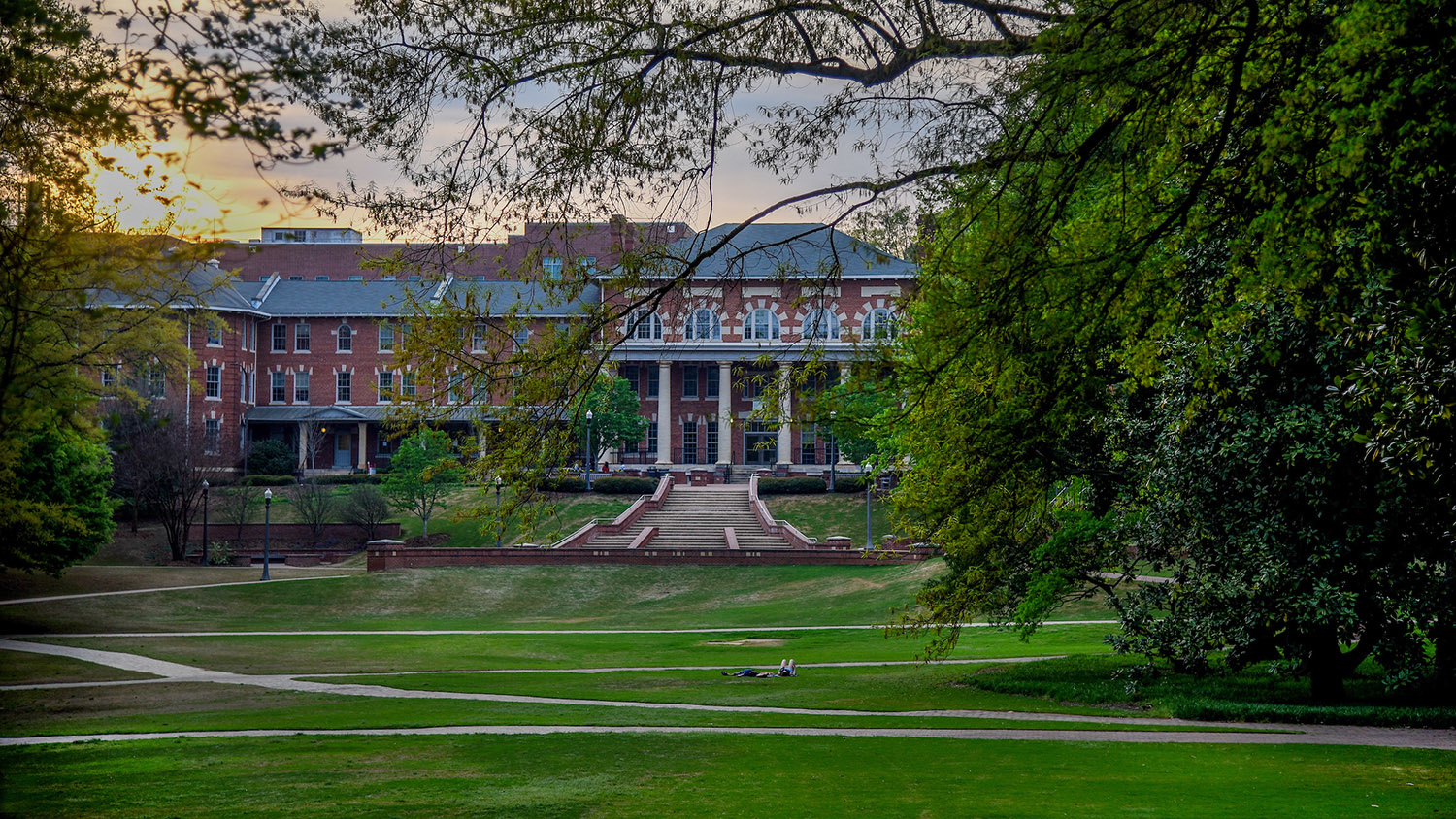Postdoc Research Spotlight: College of Engineering
Highlighting Postdoc Research from the College of Engineering
 Dylan Anderson, Ph.D.
Dylan Anderson, Ph.D.
Postdoc in Coastal Engineering
Using low-cost sensors to detect and monitor dangerous ocean currents
Research Blurb:
Nearshore currents are the prime driver of sediment transport, as well as mixing between the surf zone and the coastal ocean. Feedback between sub-aqueous morphology and momentum imparted on the water column by wave breaking, winds, and tides results in patterns such as rip currents and alongshore-variable circulation cells, which can temporally vary as pulsing features related to wave group energy such as in response to changing forcing with tides. Spatial gradients are usually strong in both the cross-and longshore directions making sampling of the full circulation patterns with an array of fixed instruments challenging. My work has developed a remote sensing technique to quantify surf zone circulation flows from video cameras. The approach removes the dominant optical signal of incident waves by a rolling mean and tracks the residual foam as passive tracers using optical flow (check out the videos on my personal website!). I have also built my own set of low-cost drifters with Global Navigation Satellite System (GNSS) receivers and inertial measurement units (IMUs) to verify circulation patterns and flow speeds remotely sensed by the cameras. Obtaining such current fields from low-cost image platforms and open-source computer vision algorithms presents a significant step to facilitate improvements in numerous disciplines from fundamental wave dynamics and hydrodynamic modeling to biogeochemical mixing in the coastal ocean and live monitoring of surf zone conditions for swimmer warning systems.
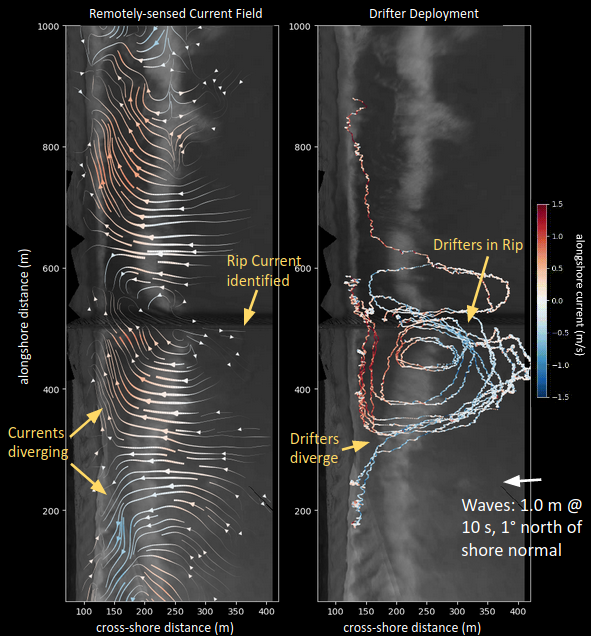
Key Finding:
Surf zone currents (including dangerous rip currents) can be detected with automated processing of videos without necessitating large file storage or costly, super high resolution cameras. Previous works have identified rip currents but required a fire-hose worth of data, preventing long-term monitoring and thus the ability to warn swimmers in real-time operating systems. Although accuracies and details regarding environmental conditions are important, the most key development from this could be the demonstration that 2D spatial fields and rip currents can be identified in a continuously monitoring system.
Research Impact:
The discipline of coastal engineering has largely been restricted to assumptions limiting analysis to single dimensions of alongshore processes or cross-shore processes, but I hope that this methodology allows for coastal scientists to begin asking fundamental questions surrounding 2D processes. The continuous monitoring of surf zone flow patterns is revealing circulation cells composed of converging and diverging currents as common features, with dependencies on water level relative to underlying bathymetry and multi-dimensional variability in sandbar features.
Connect with Dylan: Personal Website
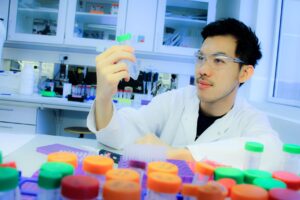 Abhichart Krissanaprasit, Ph.D.
Abhichart Krissanaprasit, Ph.D.
Postdoc in Materials Science & Engineering
RNA origami used engineer effective medical treatments
Research Blurb: RNA Aptamers on RNA Origami: A Novel Anticoagulant
Anticoagulants have been widely used in surgical and medical applications for treatment and prevention of thrombotic diseases, including stroke and deep vein thrombosis. The conventional anticoagulants, which are chemical-based, provide a great benefit in medical areas; however, they are associated with serious side effects, narrow therapeutic ranges, and lack of an “antidote” to reverse the anti-coagulation effects. Here, we present a novel type of RNA-based anticoagulant and specific antidote. We designed RNA origami which served as a biomolecular platform decorated with thrombin RNA aptamers that specifically bound with thrombin, a key molecule in the coagulation cascade. The 2’-fluoro modified RNA aptamer on RNA origami was produced and stable in human plasma longer than native RNA and DNA. We demonstrated an anticoagulation activity of RNA by using activated partial thromboplastin time (aPTT) assay. The results show that RNA aptamers on RNA origami prolong the clotting time of aPPT assay over free RNA aptamers and DNA aptamers on DNA nanostructures. The coagulation cascade can be reversed by the addition of specific DNA antidotes. These RNA aptamers on RNA origami and specific antidotes offer a new class of effective and safe anticoagulant that potentially provide significant benefits to therapeutic and medical applications.
Key Finding:
We designed, constructed, and developed novel RNA-based anticoagulants with specific reversal agents as known as antidote. The RNA origami anticoagulants provide an effective activity and are stable in human plasma that are essential properties for clinical uses. Importantly, we offer specific reversal agents to “shut-off” anti-coagulation activity. The ability to control coagulation cascade with “on-off” control provides great benefits for medical applications.
Delve deeper: Publication in Advanced Materials
Research Impact:
Conventional anticoagulants (heparin and warfarin) are widely used in medical areas to treat and prevent thrombotic diseases, such as stroke, and surgical purposes, including bypass surgery. Heparin has been widely used in surgical procedures worldwide even though it causes serious side-effects, hard-to-predict dose-response, impurities from production, and lack of an antidote. Therefore, we developed RNA origami anticoagulants that offers an effective, predictable dose-response and, importantly, available of specific antidotes. These RNA origami-based anticoagulants paired with reversal agents will offer benefits to a variety of areas, including therapeutic, surgical, and medical applications.
Connect with Abhichart: LinkedIn
Read more on Abhichart and his work in our previous ImPACKful blog piece.
Camilo Mora-Navarro, Ph.D.
Postdoc in Biomedical Engineering
Developing techniques to improve the collection of biomaterials for a range of wound-healing applications
Research Blurb:
My research focuses on harvesting the therapeutic potential of Extracellular Matrix (ECM) based biomaterials while uncovering their complexity and pursuing industrial technology translation. Injuries in the vocal folds and heart are part of a large group of challenging lesions affecting the correct functioning of tissue and organs, impacting the lives of millions of people across the US and worldwide. Arguably, the current treatments do not fully satisfy tissue regeneration for a full recovery, and the treatment options may be limited. Our group works in the development of ECM-scaffolds for wound healing application in the vocal fold tissue, heart, and tendon. A significant challenge for a full recovery of these tissues after an insult lies in their complex protein composition required for their right functioning. ECM-scaffolds are complex biomaterials derived from the decellularization process from different tissues or organs, with tremendous potential in the biomedical research field and clinically translatable to humans. We have developed novel technologies (bioreactors; see figure) to decellularize ECM-scaffolds from porcine vocal folds and heart tissue. The appropriate decellularization platform approached enables us to derive biomaterials with a biomolecular specific composition intrinsically related to the organ/tissue source. Also, we have produced injectable forms from the decellularized ECM to less invasively harvest the therapeutic potential of the biomaterials. Our vision is to use the developed scaffold by themselves or by incorporating exogenous components that enhance the regenerative outcomes.
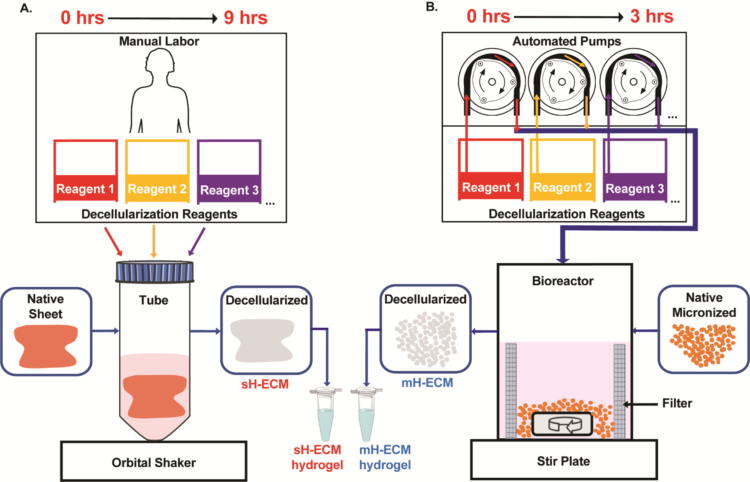
Key Finding:
We have developed a technology capable of decellularizing heart and vocal fold tissue in an automated fashion, decreasing the time to 3 hours. The technology is adaptable to a variety of decellularization protocols as well as scalable to industry capabilities. On the other hand, the vocal fold hydrogel developed in our lab has the modulatory properties of a particular fibrosis pathway tested in vocal fold fibroblasts. The uncovered modulatory property is a critical result because fibrosis remains a challenge in the recovery of different tissues and organs. In summary, these findings encourage further research exploring the translation of these outcomes.
Delve deeper: Publication in ACS Biomaterials Science & Engineering
Research Impact:
I hope to move forward the developed technology aiming the clinical translation for the ECM-scaffold materials and the industrial scaling up for the decellularization platform designed. Also, the materials and bioreactor platform in a lab-scale can be used in different research labs mainly to explode the ECM-scaffolds properties as an excellent cell culture platform for in vitro testing and stem cell research.
Connect with Camilo: LinkedIn Website
Tahira Pirzada, Ph.D.
Postdoc in Chemical & Biomolecular Engineering
Engineering biodegradable seed wraps for crop protection
Research Blurb:
I am working on an interdisciplinary and cross-continent project to develop biodegradable seed wraps for crop protection in nematode invested soils in sub-Saharan Africa. We have introduced a novel ‘wrap and plant’ technology to generate seed wraps from wastes of banana harvest. Loaded with ultra-low volume of the pesticide, these seed wraps have produced healthy potato and yam crops in the field trials in Kenya and Benin.
Key Finding:
Straightforward and cost-effective development of a ‘wrap and plant’ technology from waste materials of banana harvest for sustainable crop protection for smallholder farmers.

Delve deeper: Publication in ACS Sustainable Chemistry & Engineering
Research Impact:
To provide sufficient amount of good quality food to the ever-increasing global population, we need to develop sustainable technologies for crop protection from pests. Moreover, targeted delivery of the pesticides minimizes any damages to the environment and human health.
Connect with Tahira: LinkedIn
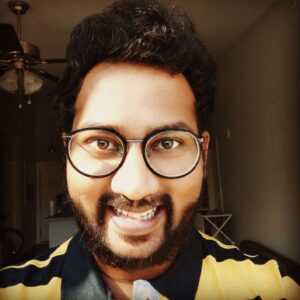 Shashwat Rathkanthiwar, Ph.D.
Shashwat Rathkanthiwar, Ph.D.
Postdoc in Materials Science & Engineering
Engineering more energy-efficient electronic materials to improve device performance
Research Blurb:
We live in an Electronics World! At the heart of every electronic gadget is an optimally designed material system. My research aims to act as a nexus between the fields of materials science and semiconductor physics by exploring the structure-property-performance correlations for nitrides of group III-A family (GaN, AlN, and their alloys). This technologically important material system attracted the Nobel prize in Physics in 2014 for LED bulbs and is exceptionally promising for a range of opto and power electronic applications. Going ahead, these will revolutionize a gamut of things around us, the way we communicate wirelessly and consume electrical energy, to name a few. My research focuses on several processes starting from the epitaxial growth of these materials by metalorganic chemical vapor deposition followed by their mechanical, optical, and materials characterization and eventually fabrication and characterization of devices. A range of atomic-level structural defects originates in these few hundreds of nanometers thick “thin” films owing to inherent challenges associated with their crystal growth. These extremely small-sized defects disrupt the translational periodicity of the otherwise perfectly crystalline material. My research revolves around studying the electrical and optical activity of these defects and therefore, how they impact performance, yield, and reliability of relatively large-sized devices realized over these thin films. The methodology is based on studying the nature of different defects, the structural and chemical environment surrounding them, and associated segregated impurities around their strain fields.
Key Finding:
Recently, I developed a predictive approach for the growth of high crystalline quality AlN films. The framework involved modeling the thermodynamics and kinetics of different processes pertaining to this crystal growth. This approach helped us realize state-of-the-art AlN thin films with the lowest reported screw dislocation density for hetero-epitaxial growth over cost-effective sapphire substrates. The optimized template led to the realization of record-performance, self-powered, deep-UV p-i-n detectors with a zero-bias external quantum efficiency of 92%. The diodes exhibited a rectification (ratio of currents in the ON and OFF states) of 11-orders of magnitude and a near-theoretical breakdown field of 6.2 MV/cm.
Delve Deeper: Publication in Journal of Applied Physics
Research Impact:
III-nitride based power transistors are poised to rival conventional silicon transistors for next-generation power electronics in terms of efficiency, heat management, footprint (hence size), and frequency of switching. For laptop computers alone the resulting worldwide energy savings are estimated at approximately 1 billion kWh annually, the equivalent of a medium-capacity hydroelectric powerplant. Systems such as hybrid vehicles, LED drivers, solar inverters, etc. will increasingly benefit from these transistors. III-nitride based optoelectronic devices, on the other hand, such as photodetectors and LEDs will be exceptionally useful in UV astronomy, missile plume detection, solid-state lighting, water purification, sterilization, etc.
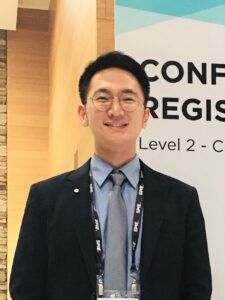 Junghyun Wee, Ph.D.
Junghyun Wee, Ph.D.
Postdoc in Mechanical & Aerospace Engineering
Detecting possible structural defects with ultrasound technology
Research Blurb:
From a broad perspective, my research falls within the field of structural health monitoring (SHM), which can be defined as a real-time non-destructive testing (NDT) and analysis of a structure, including (but not limited to) civil, naval, and aerospace structures. The ultimate goal of this research is to advance the field of SHM in order to keep people safe, by detecting possible defects within a structure in real time and preventing any catastrophic failure. Among different kinds of damage detection methods, I have been working on advancing ultrasound inspection method. A good analogy would be medical ultrasound (also known as ultrasonography), which is a diagnostic imaging technique based on the application of ultrasound, creating an image of internal body structures to evaluate any problem within. Similarly, I am taking this approach to structures, where an ultrasound source attached to the surface of a structure generates high frequency (sub-megahertz to megahertz) ultrasound in a structure and an ultrasound sensor at a distance away from the source collects the ultrasounds. If any structural damage develops between the source and detector, the ultrasound propagating between the two is changed, therefore identifying the presence of a damage.
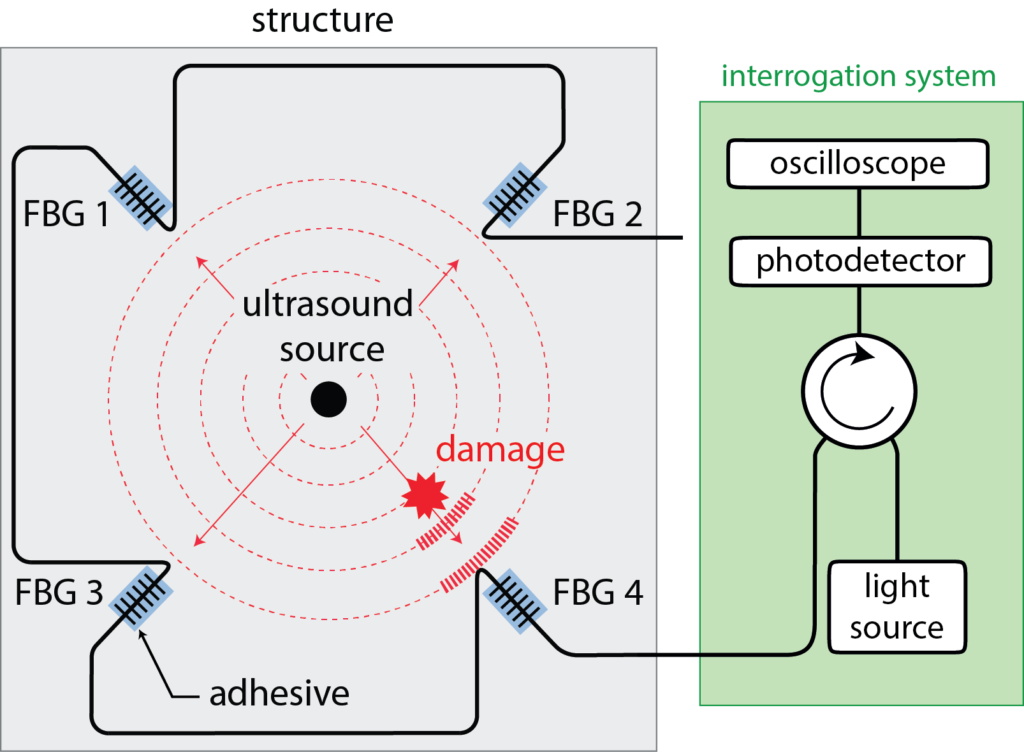
Key Finding:
My research pushes the limit of the ultrasound detection capability. Typically, high precision ultrasound sensor is required in order to monitor a minimal change in ultrasound due to damage, and it is crucial to enhance the ultrasound sensor capability for an improved extraction of relevant signal features for damage detection. Among different kinds of ultrasound sensors, my research focuses on enhancing the ultrasonic detection sensitivity of optical fiber sensors, in particular a fiber Bragg grating (FBG) optical fiber sensor, which is a promising state-of-the-art optical fiber sensing technology utilized in SHM field.
Research Impact:
My work has been funded by the Office of Naval Research, who are interested in health management of critical assets (e.g., ships, aircraft, vehicles, buildings, etc) because those assets usually undergo corrosion, fatigue, and fracture over time. That said, the first step of health management is health diagnostics, which is the process of extracting relevant information from a structure for its prognostics. For the best prognostics, the significance of my research is to advance sensor technology for collecting accurate and precise information from diagnostics. Ultimately, I hope that my research can advance the real-time health monitoring of structures in order to prevent any disastrous structural failure, therefore keeping people safe.
Connect with Junghyun: LinkedIn Google Scholar
- Categories:
